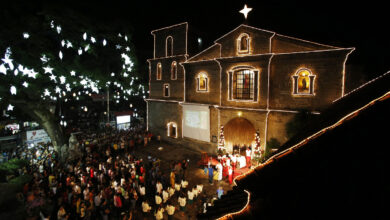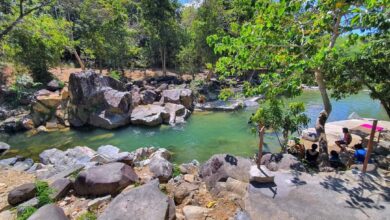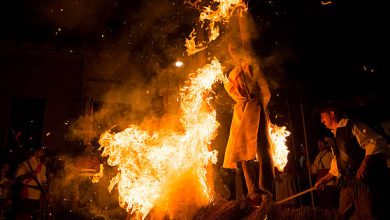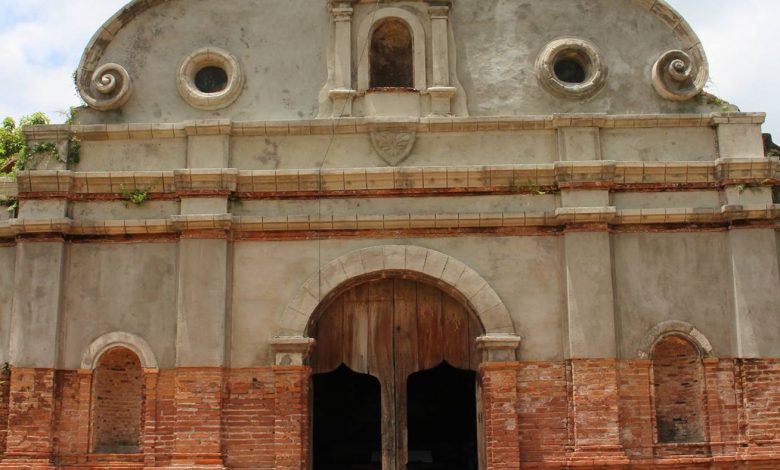
Nagcarlan Underground Cemetery: Mystery Meets History
While the Province of Laguna is more widely known for its lakes, local delicacies, and Spanish-era churches, along the stretch of road between San Pablo and Liliw is an unusual architectural and historical attraction – the curious Nagcarlan Underground Cemetery and Chapel. The only one of its kind in the country.
If you wish to step back in time and revisit the history and cultures of the past, this cemetery will give you just that. This historical architectural wonder is in fact one of few known underground cemeteries in our country and South-East Asia.

The first things that will welcome you as you arrive at this site are an arched gate and stone walls decorated by wrought-iron grills. From there, you have to walk along a pathway in the middle of a green lawn to reach the Campo Santo, the chapel in the cemetery. The cemetery has 240 niches on the walls and 36 niches in the underground crypt.
The chapel stands for the final mass for the departed souls before burying.
The Site’s Origin
A Franciscan priest named Vicente Velloc built the Nagcarlan underground cemetery in 1845. The cemetery was originally designed as the final resting place of Spanish friars and rich Catholic families in Nagcarlan. The octagonal burial site occupies a hectare of land at the foot of Mt. Cristobal – an area known for paranormal activities.
Back then, a cemetery stood beside St. Bartholomew Parish Church, but Fr. Velloc wished to build another graveyard away from the church. After the chapel and the cemetery were constructed, the friar saw the possibility of building an underground graveyard because of the place’s sloping terrain.
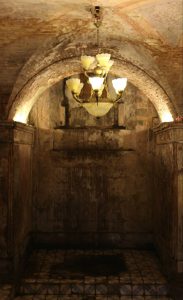
After it was finished in 1845, the first burial took place in the same year. The oldest dated tomb was 1886 while the last interment happened in 1978. That is because the Nagcarlan Underground Cemetery was then declared a National Historic Landmark by the National Historical Institute. It was a way to prohibit any more burials to preserve its history and beauty.
Historical Relevance
In 1896, the place became a meeting point by the Katipuneros. It was also where the famed Pedro Paterno met with Gen. Severino Taino to plot the Pact of Biak-na-Bato in 1897.
The underground cemetery’s usefulness did not stop there. Leaders of the Philippine revolution during the American period also used it as a covert meeting place to hide from their enemies. Lastly, during World War II, guerillas again used the cemetery as refuge.
Rumors of Secret Passages
Locals believe that the cemetery has a series of underground tunnels and passages that goes through many places. If the stories are to be believed, many people have seen the secret tunnels and walked through them. The tunnels reach the back of the altar of the Nagcarlan Church which is roughly 1 kilometer away from the Underground Cemetery. The story says that the secret passages were finally sealed by the Katipuneros to hide them from the Spanish and American invaders.
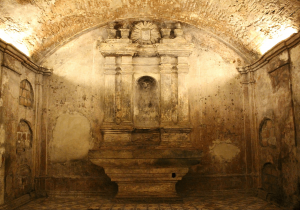
To this day, the legend of the passages is still alive to many Nagcarlenos.
Have you ever explored an underground cemetery? If not, Nagcarlan Underground Cemetery is certainly one of the places to visit in Laguna.


